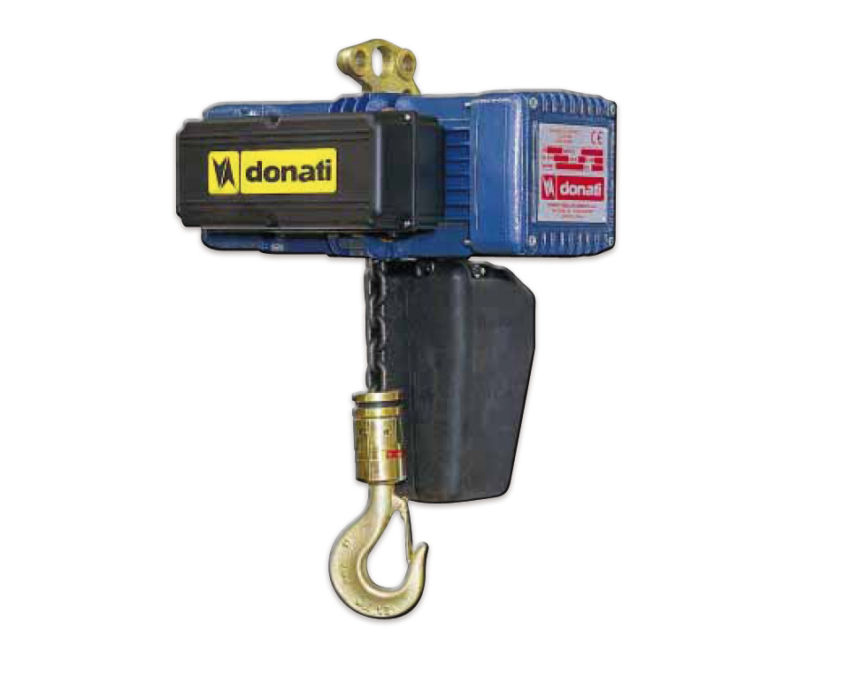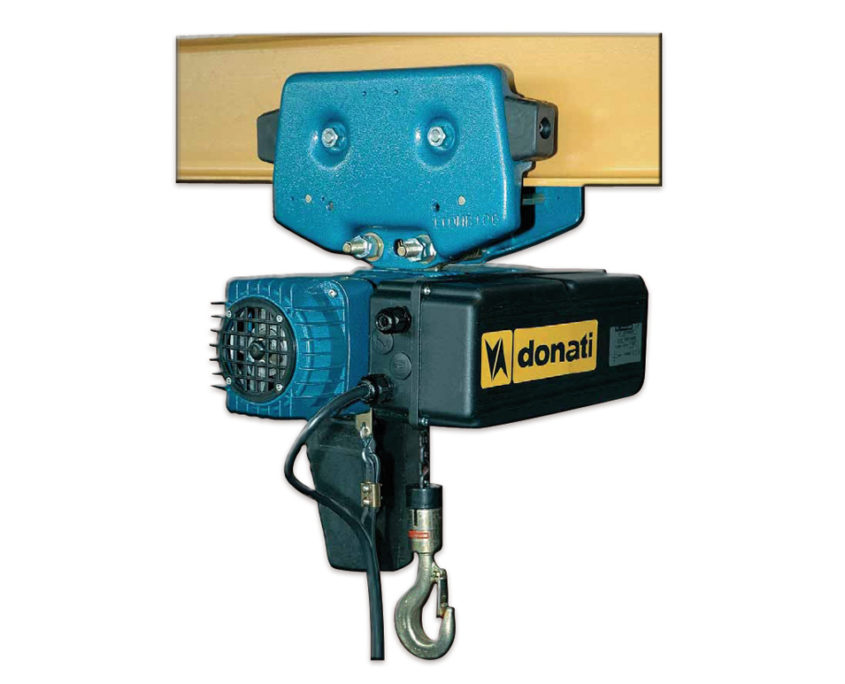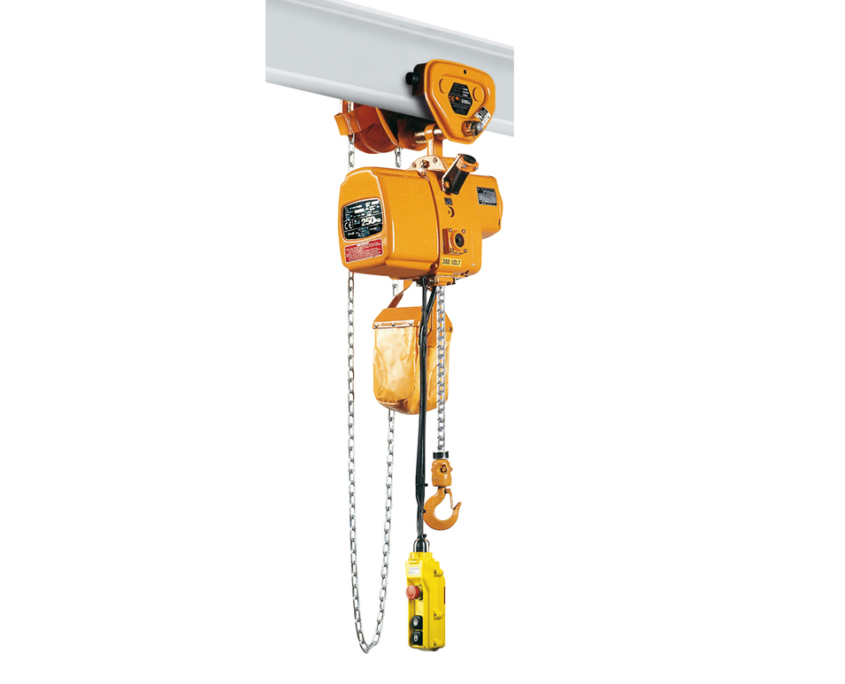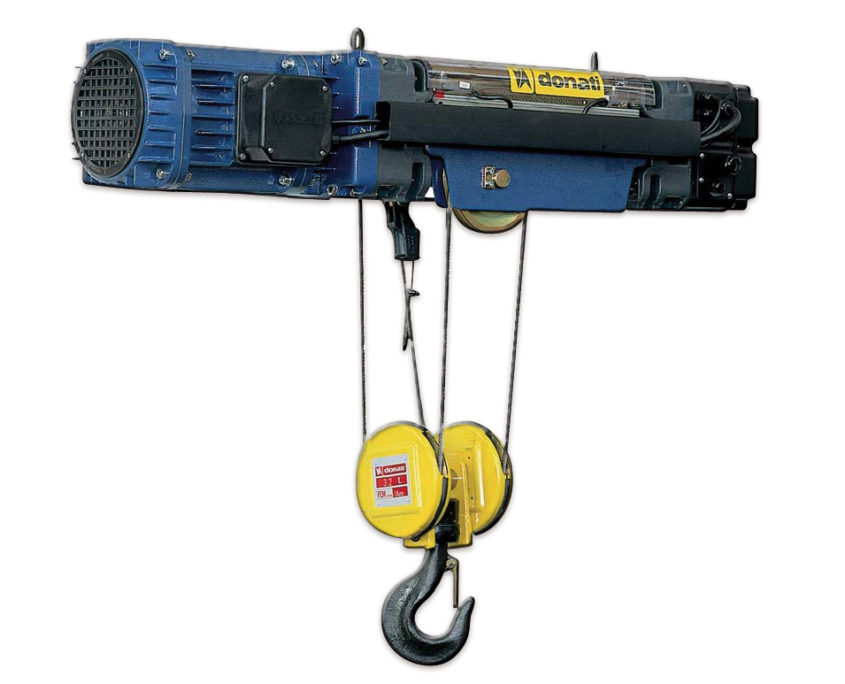Paranches
Read more
The electric chain hoists satisfy the demands of the international market, which requires products of guaranteed quality, broad range of possibilities of use, reliability of operation over time, safety guarantees in all phases of operation, excellent price/performance ratio. The electric chain hoists are distinguished by their accurate design and modern conception that put them at the top of their category.
The electric chain hoists are part of the range of lifting products sold by the Italian company Movintech, which is among the best in the lifting sector.
Warranty valid for 3 years from the date when the electric chain hoists and related electric translation trolleys are manufactured according to the design of the modular components that are assembled together in relation to commercial needs.
The base components, motor and gear reducer, thanks to their extreme compactness, are assembled together in a coaxial line, in order to guarantee the maximum exploitation of the hook stroke and the minimum overall dimensions of the hoist.
The hoist with push trolley; the horizontal travel occurs by means of manual push of the load; it is adopted for light service or on routes that are not excessively long.
The hoist with electric trolley is adopted for heavy duty work or when it is not possible to push the load manually; the travel is ensured by the trolley to which the hoist is hooked, directly controlled by the control panel of the hoist.
The hoist with chain trolley travel is obtained through a manoeuvre chain controlled by the operator who initiates the movement of the wheels of the trolley.
Lowered version of the hoist, in order to fully utilize the hook stroke, it is equipped with a chain deflection system mounted on the trolley (electric or push) with reduced overall dimensions.
- The electric chain hoists are envisaged, as standard, to be supplied with alternating electric current with voltage: three-phase at 400 V – 50Hz. In accordance with IEC 38-1.
Nominal conditions of use in standard design:
- Operating temperature: minimum – 10°C; maximum + 40°C
- Maximum relative humidity: 80%
- The hoist must be placed in fixed execution with the hoist suspended by eyebolt or (upon request) by hook.
The winch is a machine that can exert vertical effort, to lift loads, or horizontal effort, to drag them, and these efforts are exerted by means of a traction device. The winch is derived from a simple machine called a windlass which consists of a cylinder and a wheel fixed to each other and rotating around a common axis. The two forces power (P) and resistance (Q) act through ropes on the wheel and cylinder respectively.
In the winch, balance condition is obtained when the product of the forces for the length of the respective booms (in this case the radius of the wheel R and the radius of the cylinder base C), i.e. the two moments, are equal and opposite:
P x R = Q x C
From this formula we deduce that in the winch the ratio between power and resistance is equal to the reciprocal between the two booms:
P/Q = C/R
The advantage offered by the winch is that it can lift Q by means of a very small force P, even if this advantage is practical but not energetic: according to the principle of conservation of mechanical energy, the work done in the winch by the force P is equal to that done by the resistance Q, because to lift or drag for x meters the resistance Q, it is necessary to pull with a force P for y meters, giving the formula:
P*y = Q*x
It should be noted that the ratio between x and y is equal to that between the spokes of the cylinder and the wheel, as well as that between P and Q.




